After reviewing the revamped Jekyll 1 last year, I had high hopes for the Jekyll 2, which uses a significantly cheaper spec but the very same frame.
That frame is certainly the talking point here. The incredible paintjob, hidden shock and high-pivot suspension design make it one of the most instantly head-turning bikes at the trailhead.
But just how well does this fancy frame perform with cheaper parts bolted to it? Will they hold it back or is the spec well enough considered to avoid it being an issue? Read on to find out.
Cannondale Jekyll 2 frame and suspension details
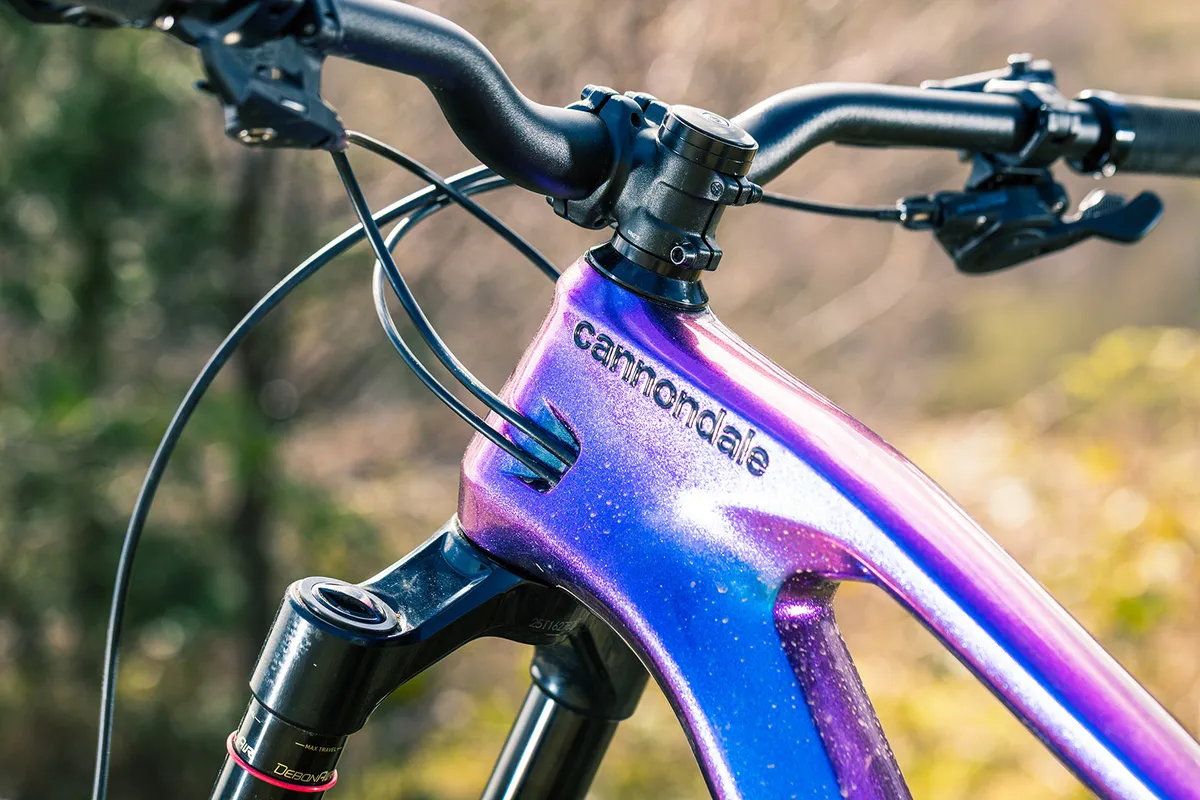
The Jekyll is only available with a carbon frame, which partly explains the high price tag.
Nestled within the deep carbon down tube sits the rear shock. This is anchored down towards the bottom bracket junction and compressed via the rocker link, which attaches to the seatstays.
Why sink the shock into the frame? Well, it’s all in a bid to lower the bike’s centre of mass as much as possible, making it more stable and confident on the trail.
Cannondale has dubbed this opening in the down tube the Gravity Cavity. Although the shock looks completely enclosed, you can access it at the top to tune pressures and twiddle (some) adjusters.
If you can’t reach those properly, a hardened plastic cover shrouds the underside of the shock, protecting it from trail debris. You’ll need your Allen keys at the ready to remove this, though.
It’s all about placement
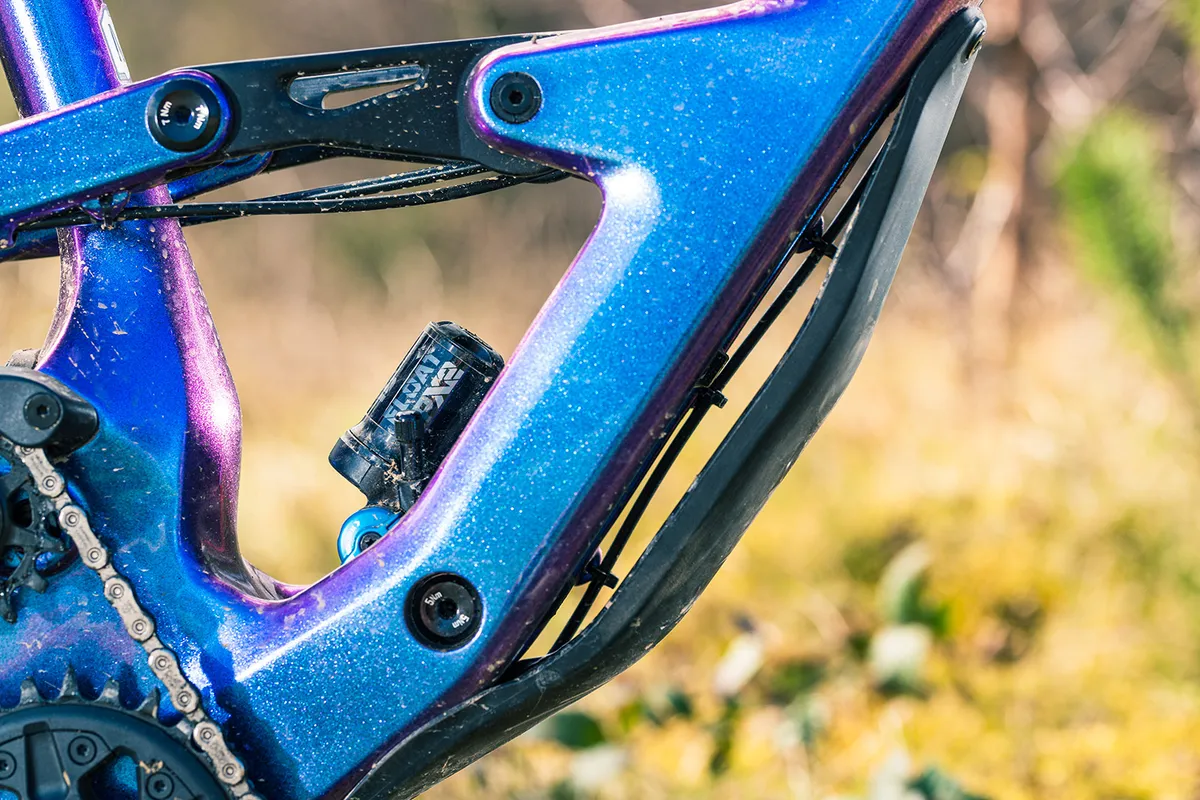
The Jekyll’s suspension uses a four-bar Horst-link design with a high main pivot. Using a high-pivot design helps create a more rearward axle path, which is said to help the bike maintain momentum through really rough sections of trail.
There are certainly more high-pivot trail and enduro bikes entering the market these days, and it’s interesting to see how each brand approaches suspension design.
According to Cannondale, the Jekyll’s axle moves back behind its starting point by around 12mm when it’s sunk about 100mm into the 165mm of travel on offer. As the bike continues to cycle through the travel, the axle arcs forward and upwards until bottom-out.
Despite their current popularity, high-pivot designs do tend to create considerable amounts of pedal kickback (in very basic terms, this is caused when the distance between the cassette and chainring increases – due to the rearward axle path – as the suspension compresses).
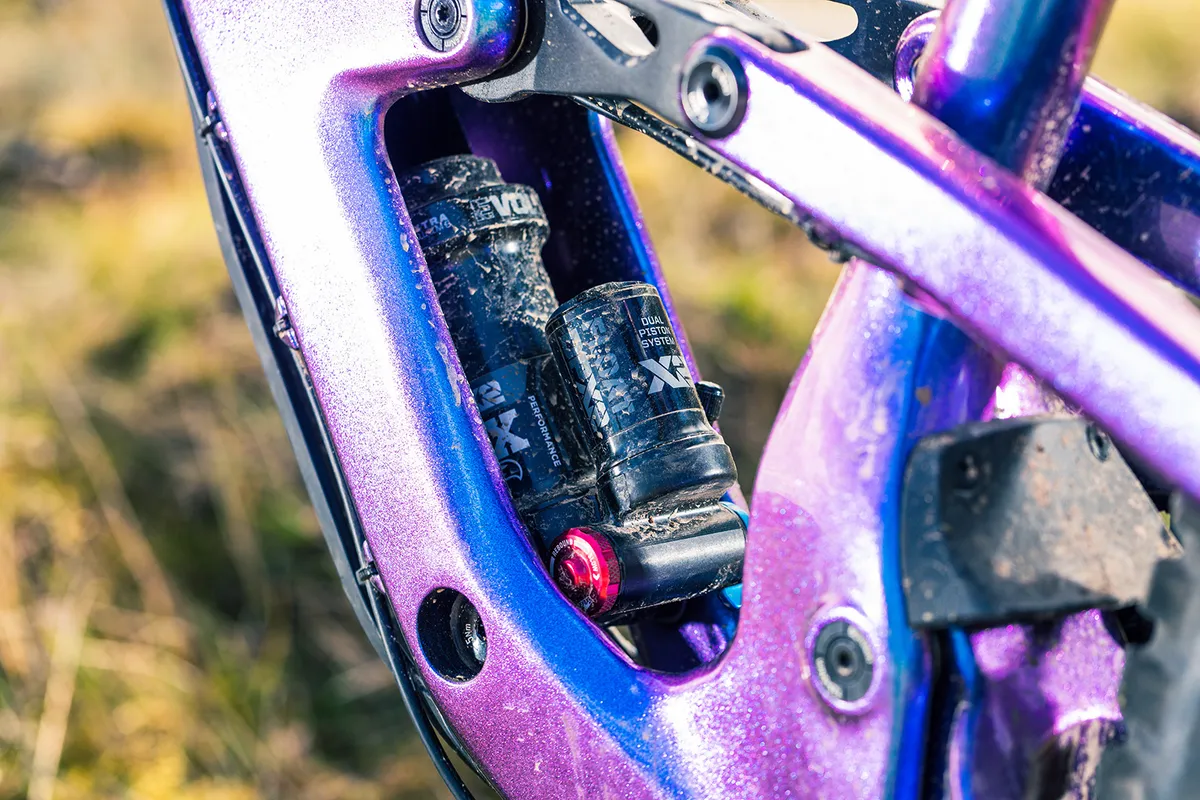
To help eliminate the kickback, Cannondale has added an idler wheel, complete with its own chainguide, which is attached to the mainframe and positioned just behind the main pivot.
Whenever people hear the word 'idler', they’ll normally assume the bike comes with some kind of associated additional drag and noise (the chain does, after all, need to work its way around an additional cog).
Cannondale claims, though, that the Jekyll is only around one per cent less efficient than its predecessor, which used a standard, non-high pivot design, so it shouldn’t feel drastically different under power.
Tuned travel
Cannondale gives its Proportional Response treatment to all Jekyll frames. In short, this means each frame size has specifically tuned kinematics (that means slightly different leverage ratios, levels of anti-squat and anti-rise, as well as differing axle paths).
This ought to ensure that no matter how tall a rider or what frame size they ride, everyone gets the same ride feel.
At sag and in the easiest climbing gear, the Jekyll’s anti-squat (basically, a measure of how much a suspension system can resist pedal bob) is around 105 per cent.
Ultimate offset?
Like other bikes in the Cannondale range, the Jekyll uses the Ai (that’s Asymmetric Integration) Offset Drivetrain system.
Here, an asymmetrical rear triangle shifts the drivetrain over to the right by 6mm. This, in turn, helps sit the rim more centrally over the hub flanges (as opposed to being centred between the hub end caps).
Cannondale claims this improves spoke tension and angle for a stronger rear wheel. It’s said to also improve mud and tyre clearance.
Cannondale Jekyll 2 geometry
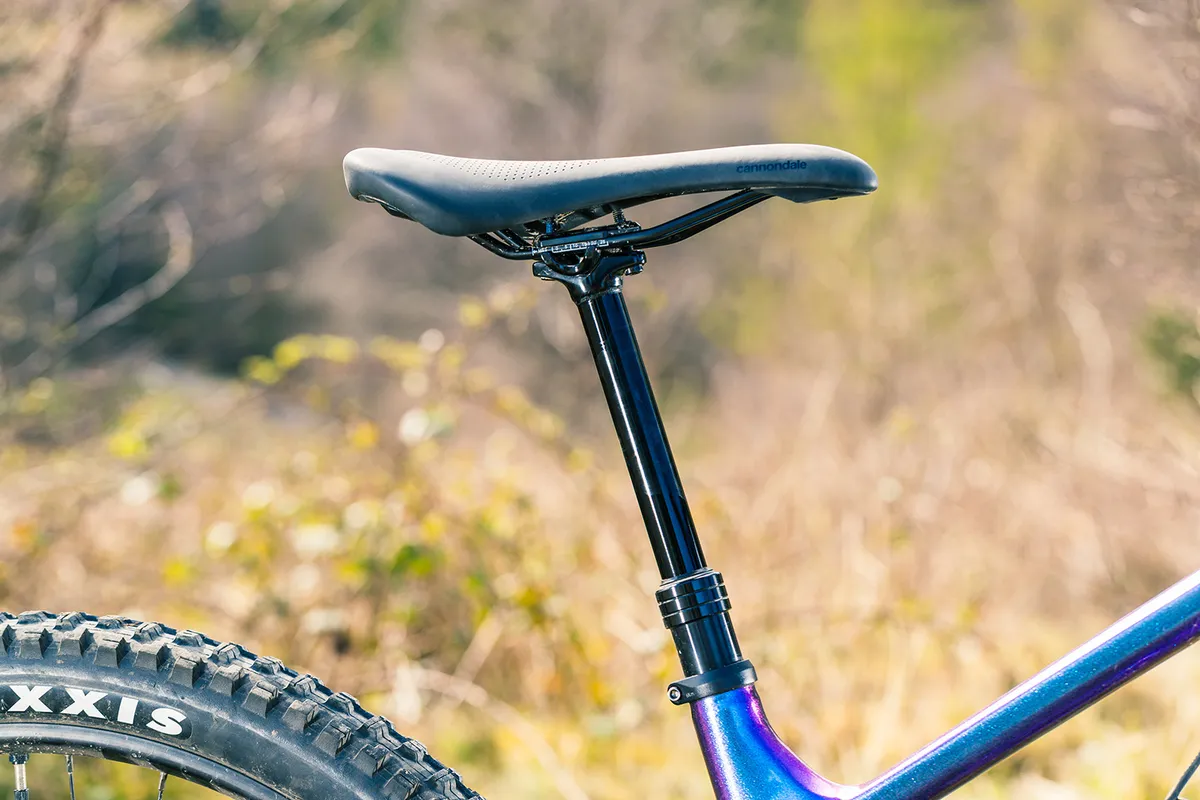
Cannondale doesn’t make a Jekyll with 27.5in wheels, nor one with a mixed-wheel-size setup. This is a 29er only. Thankfully though, the brand does offer it in four frame sizes (small to extra-large) with some decent geometry across the board.
My medium test bike sported a healthy reach of 450mm, which is in line with many other similarly intended bikes.
A slack 63.5-degree head angle should help provide a decent amount of stability at high speeds, as will the 800mm front centre.
To help create a nice, efficient seated climbing position, the Jekyll’s effective seat tube angle is steep at 77.4 degrees.
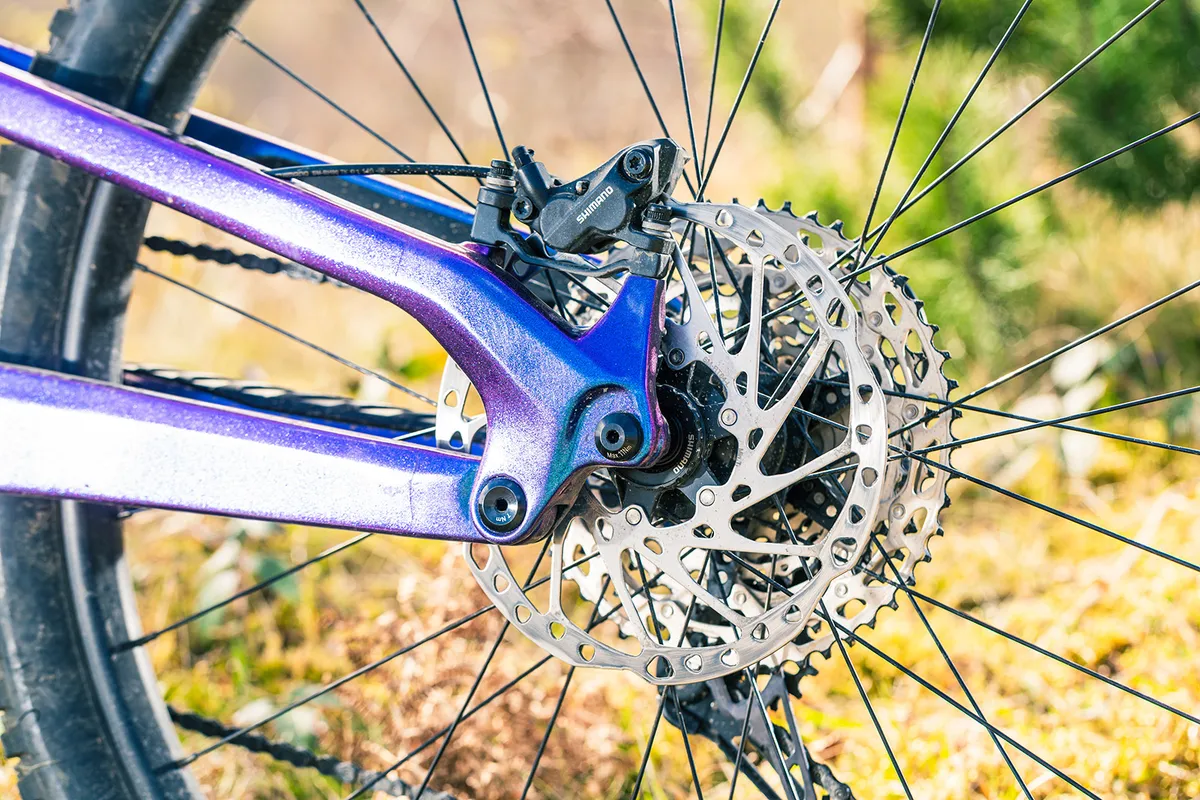
As part of the brand’s Proportional Response concept, it isn’t just the suspension kinematics that are tweaked as you change frame size, but the effective chainstay length, too.
While my medium test bike had an effective chainstay length of 435mm, the extra-large boasts a measurement of 450mm.
Finally, I measured the bottom bracket a little lower than claimed, at 340mm – which is low for a bike with this much travel.
| | S | M | L | XL |
|---|---|---|---|---|
| Seat angle (degrees) | 77.5 | 77.5 | 77.5 | 77.5 |
| Head angle (degrees) | 64 | 64 | 64 | 64 |
| Chainstay (mm) | 430 | 435 | 442 | 450 |
| Seat tube (mm) | 390 | 410 | 445 | 500 |
| Top tube (mm) | 569 | 608 | 623 | 660 |
| Head tube (mm) | 100 | 110 | 120 | 130 |
| Fork offset (mm) | 44 | 44 | 44 | 44 |
| Trail (mm) | 135 | 135 | 135 | 135 |
| Bottom bracket drop (mm) | 30 | 30 | 30 | 30 |
| Bottom bracket height (mm) | 348 | 348 | 348 | 348 |
| Wheelbase (mm) | 1,193 | 1,227 | 1,264 | 1,311 |
| Standover (mm) | 750 | 750 | 760 | 770 |
| Stack (mm) | 625 | 634 | 643 | 652 |
| Reach (mm) | 425 | 450 | 475 | 510 |
Cannondale Jekyll 2 specifications
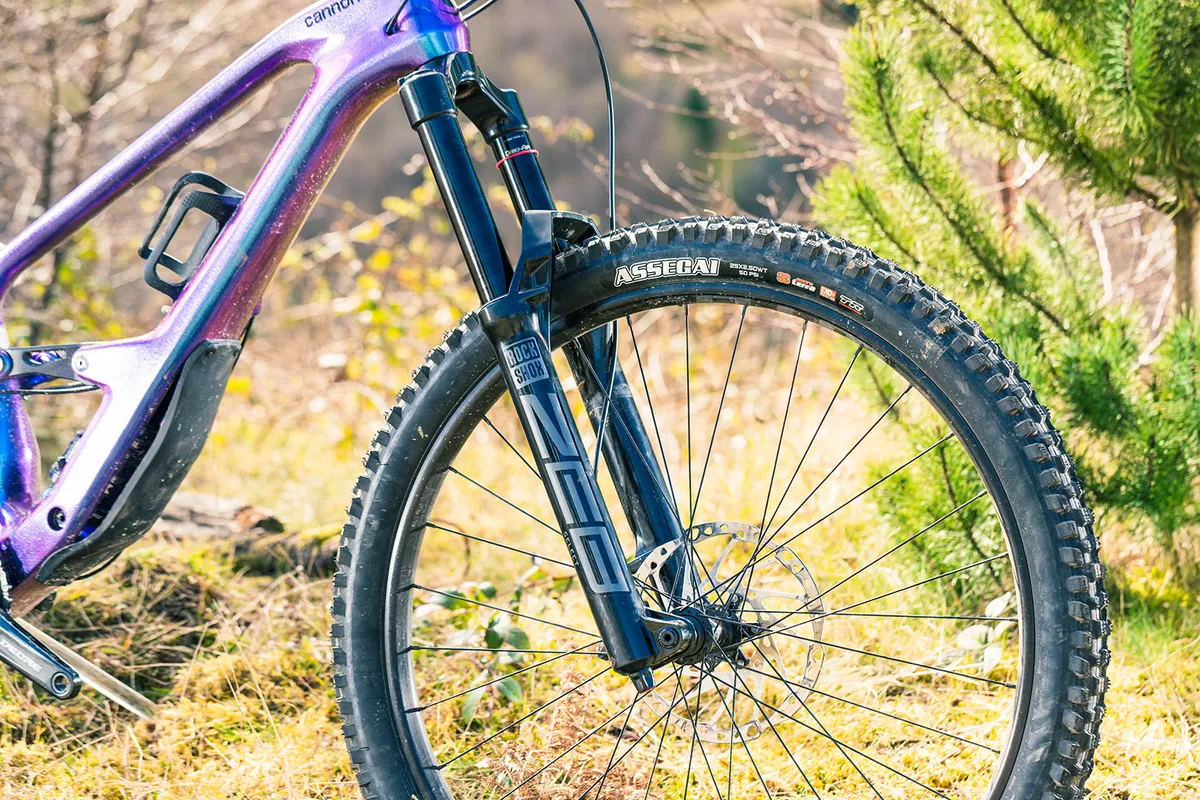
While some might be surprised to find Shimano Deore gearing on such a pricey bike, they needn’t worry – it works incredibly well and there’s a decent range courtesy of the 10-51t, 12-speed cassette.
It’s also nice to see shorter 165mm cranks included to reduce the frequency of pedal strikes, which is a definite plus considering that low bottom bracket.
The M6120 brakes (which use four-piston calipers) are light at the lever but seriously punchy as soon as they clamp the rotors. They certainly don’t disappoint.
The 170mm-travel ZEB Select fork up front uses RockShox’ more basic Charger RC damper within its stout, 38mm chassis.
There’s external low-speed compression and rebound-damping adjustment, and it’s easy to tune the air spring with volume spacers.
At the rear, taking care of the 165mm of rear-wheel travel is a Fox Float DPX2 Performance. This offers a low-speed compression lever to help firm the shock up when climbing, along with rebound-damping control.
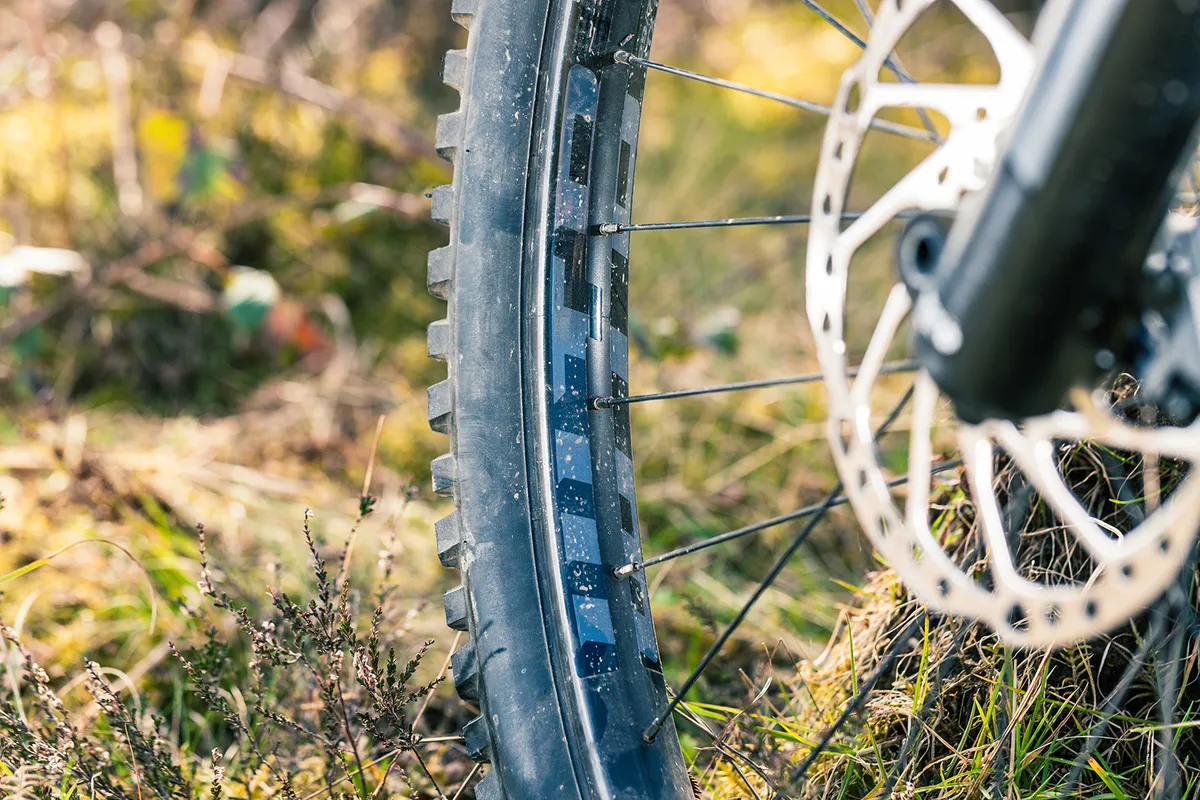
WTB provides the STX i30 rims, laced to Shimano hubs. These are wrapped in Maxxis rubber (Assegai 3C MaxxTerra EXO+ 29x2.5in at the front and a Minion DHR II 3C MaxxTerra EXO+ 29x2.4in out back). I’ve always got on with this tyre combination, and knowing it had been included helped give me peace of mind.
While Cannondale has opted to use a TranzX dropper post, the remainder of the finishing kit is own-brand stuff. Although I can’t quibble about the bar and stem’s performance during testing, I did get a few comments that it looked rather cheap and not what might have been expected on such a high-end machine.
Overall, my Jekyll 2 test bike weighed 16.1kg.
Cannondale Jekyll 2 ride impressions
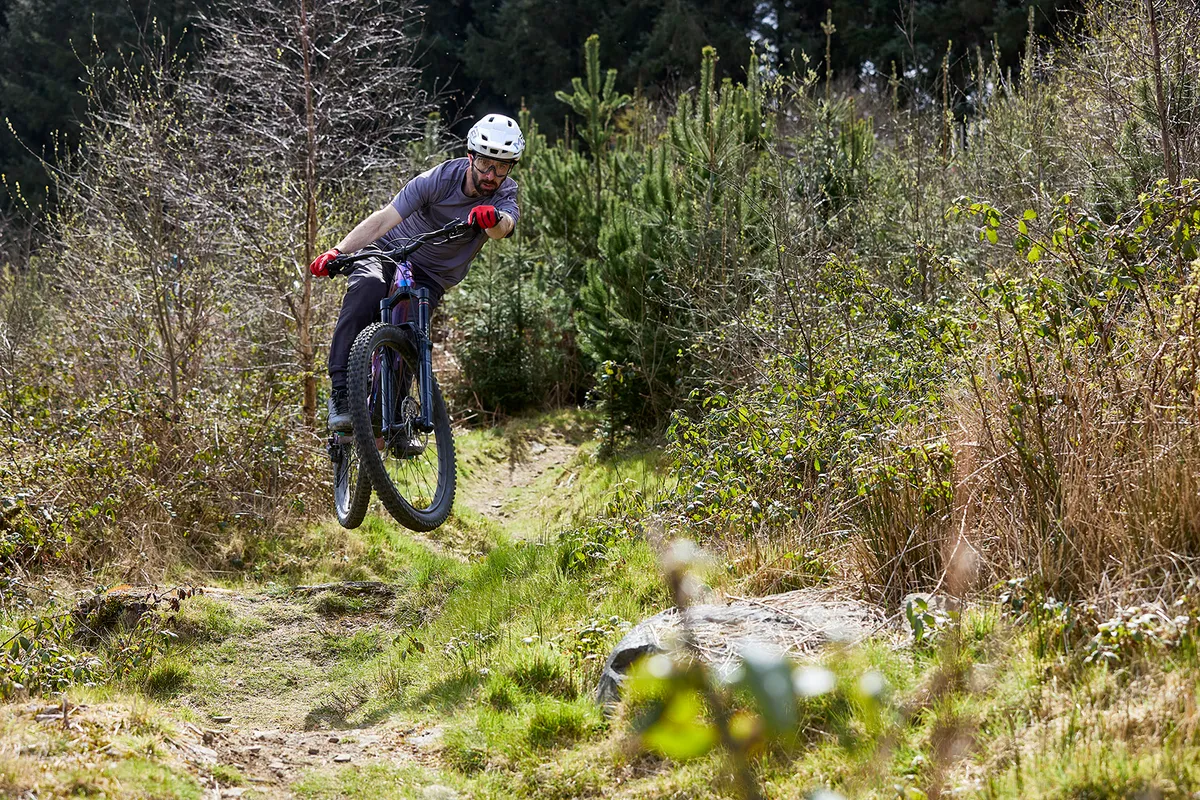
In a bid to get to grips with the Jekyll and see where it worked well and where it didn’t, I made sure to ride a wide variety of trails in different conditions.
These included everything from fast, rough and ready bike park laps to steep, technical, root-infested natural trails.
Setting up the Cannondale Jekyll 2
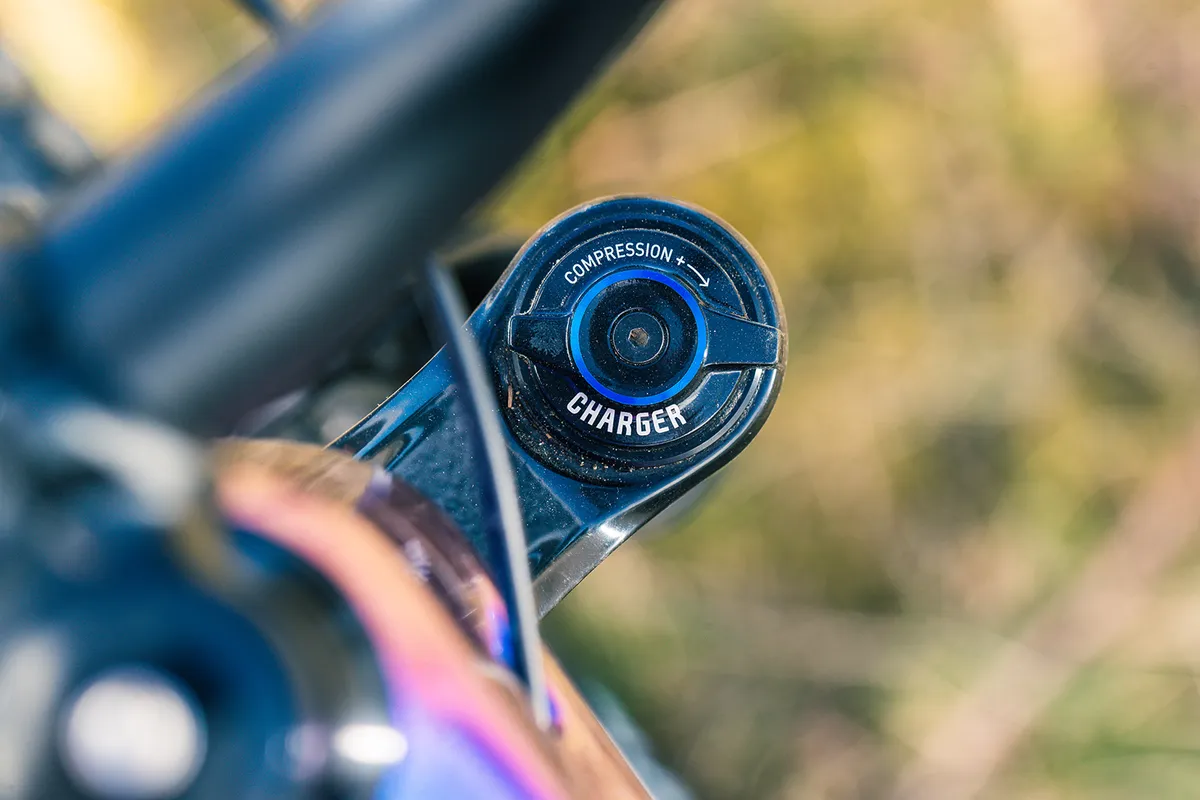
Having spent so much time aboard the Jekyll 1, I knew what was needed to get the Jekyll 2 dialled in pretty quickly.
As the DPX2 rear shock has fewer adjustments compared with the more expensive X2 featured on the top-tier bike, setup was actually even faster.
I ran 195psi in the rear shock with no volume spacers. This gave me just under 25 per cent sag, which felt perfectly balanced for the trails I was riding. I settled on 10 clicks of rebound (from fully closed).
With one volume spacer and 56.5psi in the fork, I had no issues with reaching full travel or bottoming out harshly. Rebound was set to 10 clicks from fully closed, too.
Cannondale Jekyll 2 climbing performance
The seated position on the Jekyll feels great, even on really long climbs. There’s plenty of room in the cockpit without ever feeling as though you're being stretched out or forced down too far over the front, thanks in part to that 608mm effective top tube and steep 77.4-degree seat angle.
It’s a great position to tackle really harsh climbs too, where I was impressed by how well the Jekyll managed to pedal under power.
While the back end will sink a little as you wind your legs around at lower cadences when grunting your way up something really brutal, it remains relatively calm and doesn’t bob too much at all.
As a result, I never once needed to flick the low-speed compression lever on the shock to firm things up, and left it wide open throughout testing.
Drag race
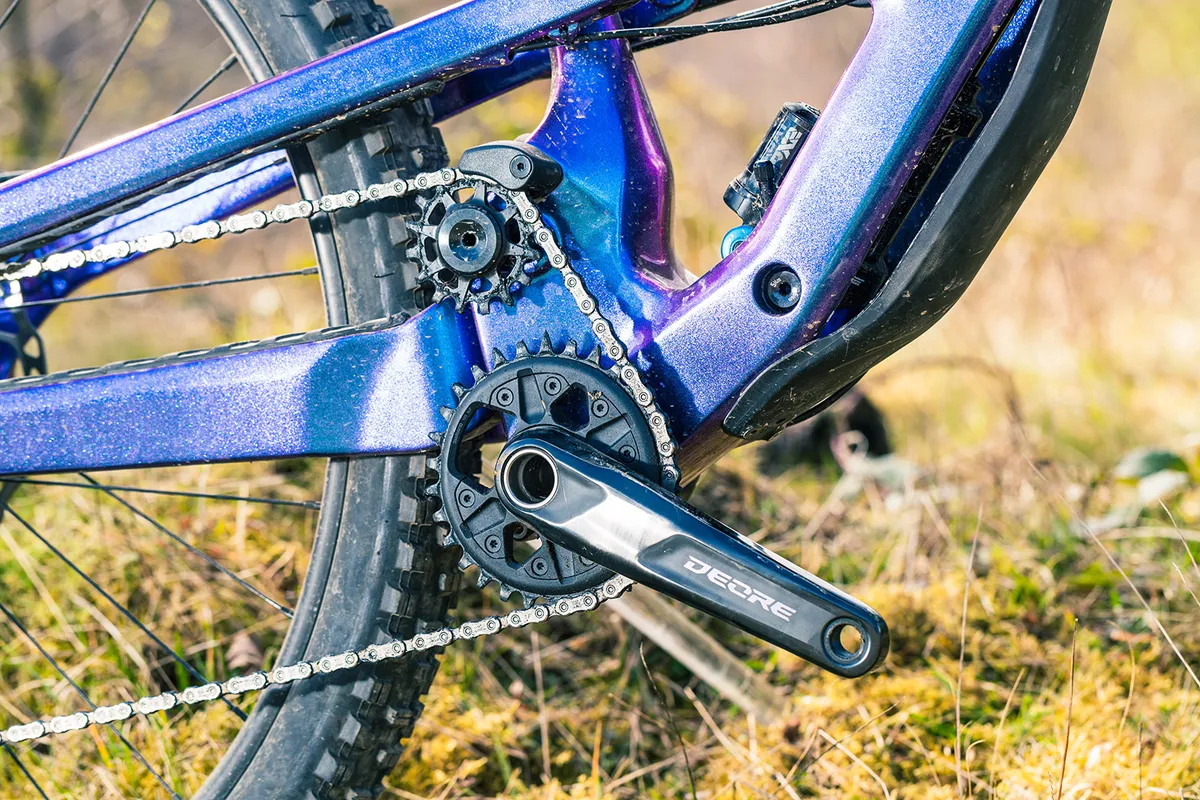
And what of that idler pulley and the potential for extra noise or drag?
Well, without getting a power meter out and meticulously testing multiple bikes numerous times to accurately compare it, it’s hard to say if there is more drag in the system than Cannondale claims. For now, I can only go on feel – and in that regard, the Jekyll did well.
Of the eight bikes I tested as part of Enduro Bike of the Year, the Cannondale might not have been the most eager uphill, but it wasn’t as hard-going as some.
What’s impressive is that it feels easier on the climbs when compared to the GT Force, which uses a very similar suspension design (high pivot with an idler). This was especially noteworthy when using the bigger 51t sprocket.
With a clean drivetrain, I’d say the noise from the idler was akin to that of using a bike equipped with a chainguide when in the easiest gear. I did notice that noise a little more when caked in mud, though.
As for the gearing in question, even if the Deore gearing doesn’t float your boat (especially if you’re a bit of a gear snob), there’s no denying that it works incredibly well.
The shifting is really slick, even under power, and I really appreciated the wide-range cassette, especially when climbing after a long day in the hills.
Cannondale Jekyll 2 descending performance
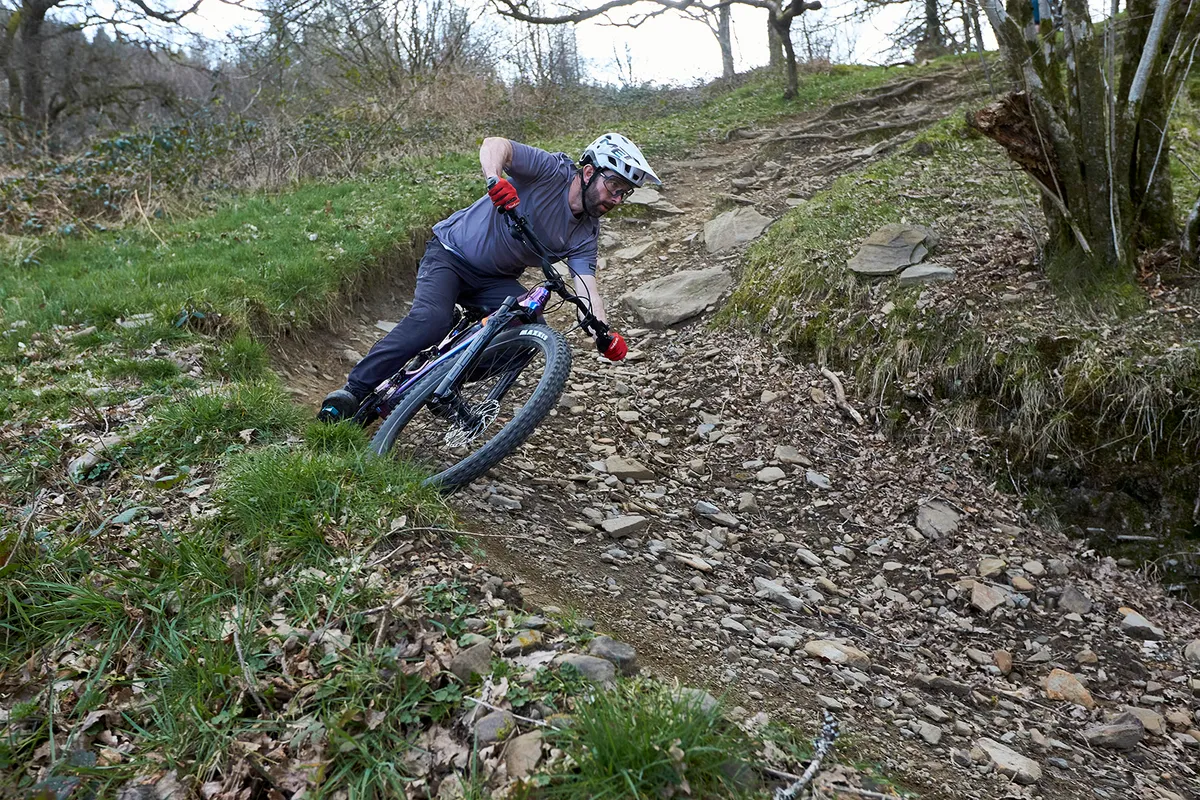
With gravity on your side, it’s immediately obvious that the Jekyll offers a well-balanced ride, that’s more playful than you might expect from a bike with a high main pivot.
While the back of the bike feels active and does a fine job of smoothing out trail chatter, it’s supportive enough to give the Jekyll a lively feel. This is, of course, assuming you’ve hit the sweet spot when it comes to the sag at the rear.
Too much sag and although the Jekyll will do an impressive job of erasing bumps, it’ll lack the liveliness needed to throw it about on the trail, load it through turns or pump it through undulations.
Get it right, and the bike manages to balance support and traction very, very well.
It helps that the geometry centres the rider nicely between the wheels. Despite the rear centre effectively growing as the bike plunges through its travel, because it’s not an unwieldy amount, the Jekyll remains predictable and easy to ride through the turns.
The low-slung centre of mass and bottom bracket help to boost confidence here, while the Maxxis rubber does a fine job of clawing onto whatever traction might be available.
At speed, I found I was able to set up for a corner early – thanks in part to how crisp and punchy the Shimano brakes felt – get off the anchors then rail the turn in a nice and relaxed position on the bike.
The confident stance created by the geometry means there’s no need to shift your weight around to counter anything funny going on with the bike.
Instead, you sit centrally while the Jekyll does its thing before firing you out the other end.
Highs and lows
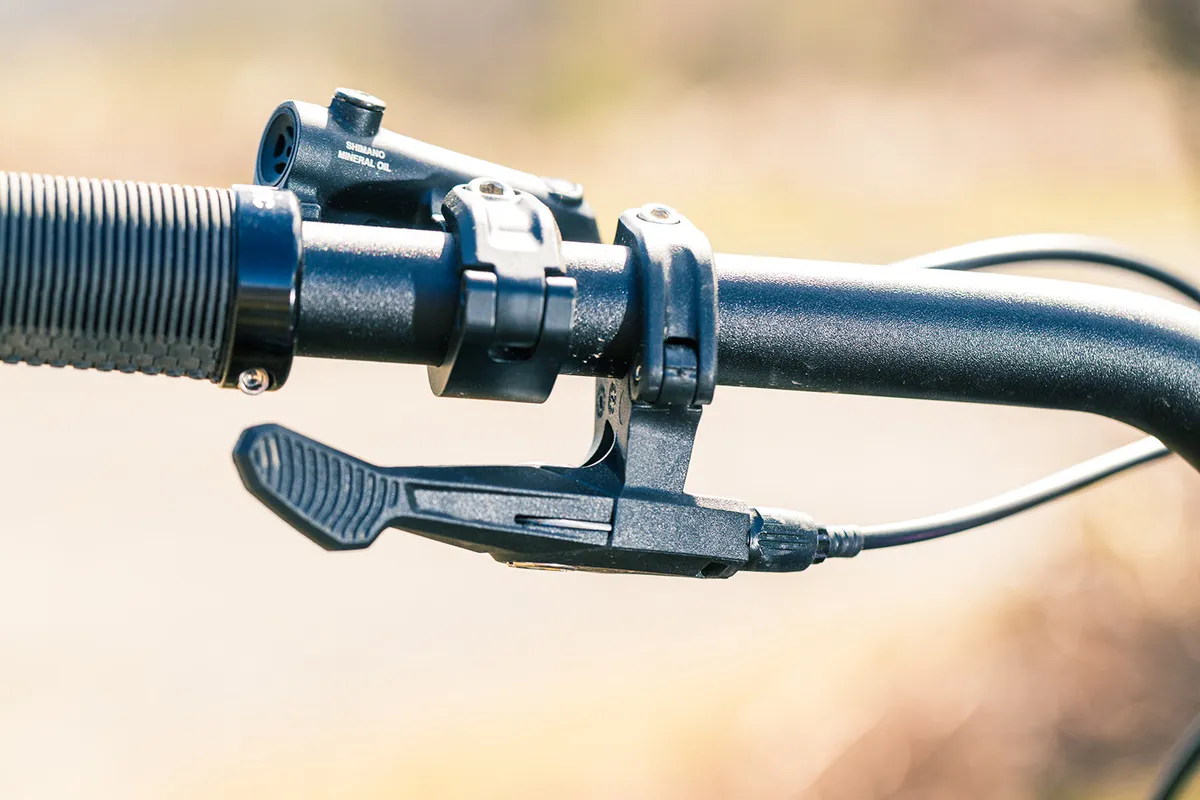
I’ve already mentioned the Shimano stoppers and how powerful they feel, as well as the decently predictable Maxxis rubber. But there are a couple of other parts worth a mention here, and not necessarily because they’re good.
Like the Shimano Deore gearing, the TranzX dropper post might not be the flashiest or most expensive option out there, but it always impressed on the trail.
The lever feels light to use, making smaller micro-adjustments quick and easy, while the action from the post remained smooth throughout testing.
In a similar vein, the RockShox ZEB Select fork felt solid when really pushed. Its stout chassis helps to make for an accurate feel through the bars, which is a real plus when tackling hectic boulder fields or steep, rough chutes into tight turns where you really need to know and feel what your front wheel is doing.
The Charger RC damper doesn’t feel quite as quick to recover or as fluttery and smooth as the pricier Charger 2.1 equivalent, though. It’s still incredibly capable, but at times it's outclassed by the performance of the Jekyll’s rear end.
My main bone of contention has to be the wheels, though. While the rim/hub combination is a little different to that on the Jekyll 1, I still suffered similar problems towards the end of testing on the Jekyll 2 (though not as severe or pronounced).
While I didn’t manage to ding the rims this time around, I still managed to loosen spokes in the rear wheel on a number of rides, which was frustrating and a problem that I only experience on the Jekyll and none of the seven bikes it was up against in this test.
Prior to this happening, I was happy enough wheels on the whole, the rear just didn’t hold up as well as others – and arguably, as it should have on such an expensive bike designed for enduro racing.
Rough with the smooth

When tackling really rough, high-speed sections of trail, the Jekyll remains composed, with little in the way of pitching back and forth when things get really wild, maintaining its dynamic geometry well.
Although it employs a high-pivot design, there’s still a reasonable amount of feedback through the frame compared to its closest rival, the GT Force Pro.
The Jekyll’s ride is a little more racy and engaging in comparison because it doesn’t swallow the bumps in quite the same way as the GT. Yes, it’ll certainly smooth things out impressively well, but requires a bit more rider input at times.
It’s not sluggish or wallowy, though, and feels fast, direct and urgent when the speeds pick up.
How does the Cannondale Jekyll 2 compare?
In terms of suspension platform, the easiest comparison to make is with the GT Force Pro.
The Jekyll is a different beast, though, and feels more efficient uphill and racier downhill.
Cannondale Jekyll 2 bottom line
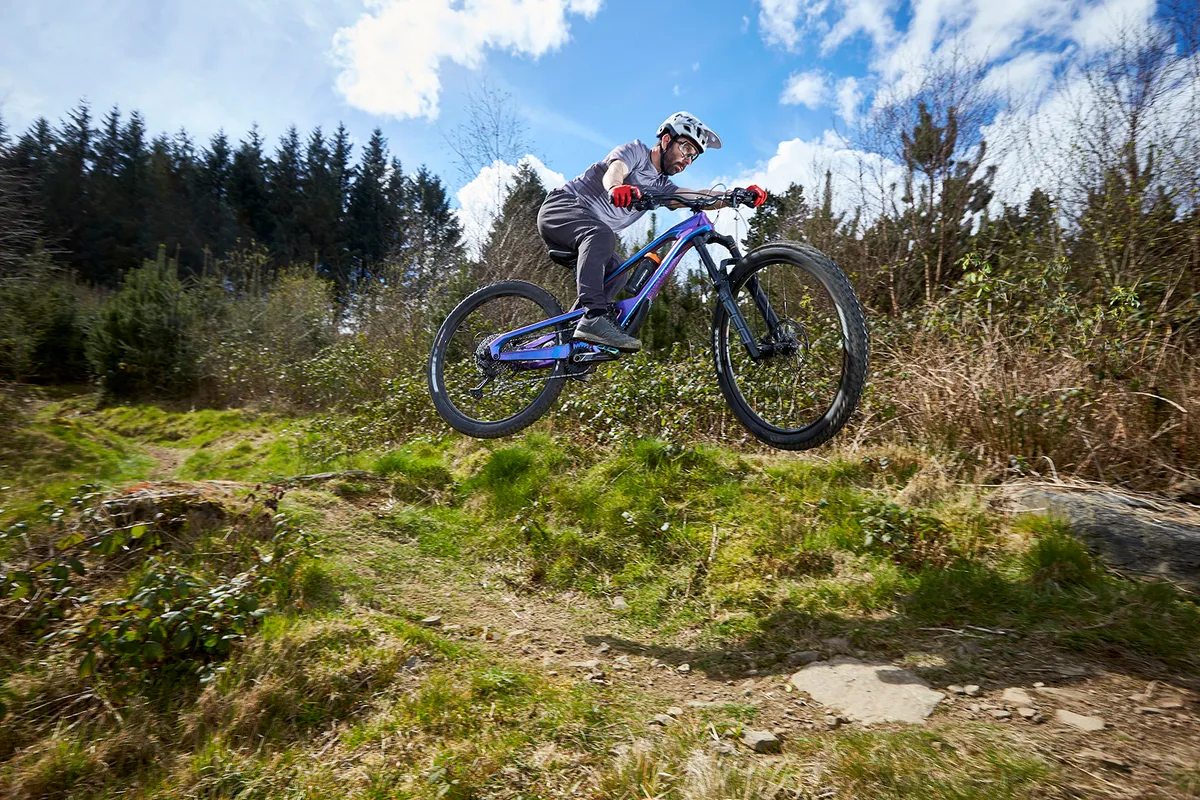
The Jekyll 2 is a pricey bike and while the spec might not blow you away for the money, the kit in place works really well for the job at hand.
That said, I did suffer from some wheel-build woes, which is a shame considering the cost we’re dealing with here.
Aside from that, the Jekyll’s performance impressed. It’s a decent climber with great geometry and certainly very capable when pointed downhill. There’s no knocking the calm and composure at speed and it’ll rail a turn with confidence, too.
Enduro Bike of the Year 2022 | How we tested
Designing a high-performance enduro bike is all about balance.
While there’s no denying these bikes need to descend with the confidence and poise of a full-blown downhill bike, they still need to be pedalled back up to the top of the hill.
But, more than that, they also need to be built to last with components that can take a serious beating.
To be crowned as the best enduro bike on test, we were looking for a bike that felt pleasant enough on the climbs (no enduro bike will ever be a cross country-like mountain goat!) and easy to ride fast when pointed back downhill.
Testing the bikes required a serious amount of riding over a 12-week period. The terrain needed to be varied, too. Testing included everything from steep, natural trails covered in roots and peppered with rocks and mud, through to faster, high-speed bike park tracks with wheel-destroying rock gardens and chunky jumps.
We rode all of the bikes on test back-to-back to pin down the differences and mixed up the order in which we rode the bikes to see just how each machine felt when we were fresh – and not so fresh.
Our 2022 Enduro Bike of the Year contenders are:
- Cannondale Jekyll 2
- Canyon Torque CF8
- GT Force Carbon Pro
- Marin Alpine Trail XR
- Nukeproof Giga 297 Carbon Elite
- Propain Tyee AL 29 Performance
- Santa Cruz Bronson C R
- Whyte G-180 RS MX
Thanks to…
Thanks to our sponsors MET Helmets, Bluegrass Protection and BikePark Wales for their support in making Bike of the Year happen.
Product
| Brand | cannondale |
| Price | 6899.00 AUD,4999.00 EUR,4800.00 GBP,4550.00 USD |
| Weight | 16.1000, KILOGRAM (M) - without pedals |
Features
| Fork | RockShox ZEB Select, 170mm (6.9in) travel |
| br_stem | Cannondale 3, 40mm |
| br_chain | Shimano Deore 6100 |
| br_frame | Carbon, 165mm (6.5in) travel |
| Tyres | Maxxis Assegai 3C MaxxTerra EXO+ 29x2.5in (fr)/Maxxis Minion DHR II 3C MaxxTerra EXO+ 29x2.4in (r) |
| br_brakes | Shimano M6120 (203mm rotors) |
| br_cranks | Shimano Deore M6120 |
| br_saddle | Cannondale Stage 3 |
| br_wheels | WTB STX i30 TCS rims on Shimano MT400 (fr) and MT410 (r) hubs |
| br_headset | Integrated |
| br_shifter | Shimano Deore M6100 |
| br_cassette | Shimano Deore M6100 |
| br_seatpost | TranzX Dropper, 150mm |
| br_gripsTape | Cannondale TrailShroom |
| br_handlebar | Cannondale 3 Riser, 780mm |
| br_rearShock | Fox Performance DPX2 |
| br_bottomBracket | Shimano Deore |
| br_availableSizes | S, M, L, XL |
| br_rearDerailleur | Shimano Deore M6100 |
